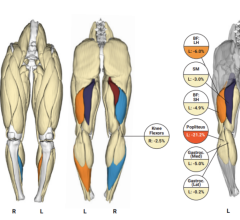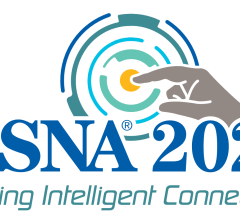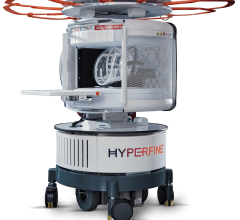
Siemens Healthcare will highlight the Magnetom Essenza which features 30 mT/m gradients, reportedly delivering excellent image quality for all clinical applications, and the MAGNETOM Verio, which combines image quality at 3T field strength and a 70-centimeter open bore that aims to offer improved patient comfort in one solution.
Both of these systems offer the Siemens Tim (Total imaging matrix) technology, which aims to eliminate the need for patient repositioning and manual coil changes during scans, while enhancing image quality. Tim technology can help MRI departments achieve advanced clinical and workflow capabilities, according to the company.
The 1.5T Magnetom Essenza weighs in at 3.5 tons, designed to allow a facility more installation options as the magnet can be installed on higher floors. The system has a length 145 centimeters, which is the second shortest system length offered by Siemens. If the system is replacing an existing MRI, it can reportedly reduce energy consumption by up to 50 percent. The magnet also has zero helium boil-off so there is no need to regularly refill the expensive cooling substance, and the system is always ready for operation. The system also includes the IsoCenter Matrix coil, which is installed at the center of the magnet, aiming to ensure it is always in the correct position, providing a workflow solution that leads to improved image quality, according to the company.
Due to the Verio’s 70-centimeter bore diameter, the average distance between a patient’s eyes and the magnet is 30 centimeters, reportedly alleviating concerns of claustrophobia in many patients. In addition, the wider space makes it possible to scan patients who could not be examined with the MRI system in the past, including those suffering from kyphosis (limited mobility) or those who are in pain, as well as pediatric and obese patients up to 550 pounds, those who are dependent on medical devices and those who are in intensive care.
With a system length of only 173 centimeters, the MAGNETOM Verio is currently the shortest 3T MRI system on the market, while having the footprint of a 1.5T MRI system, according to Siemens. Furthermore, it is equipped with a magnet of six tons, compared to other 3T systems. The installation costs for the MAGNETOM Verio are minimized and the system also uses a zero helium boil-off technology.
January 2008


 April 10, 2025
April 10, 2025 








